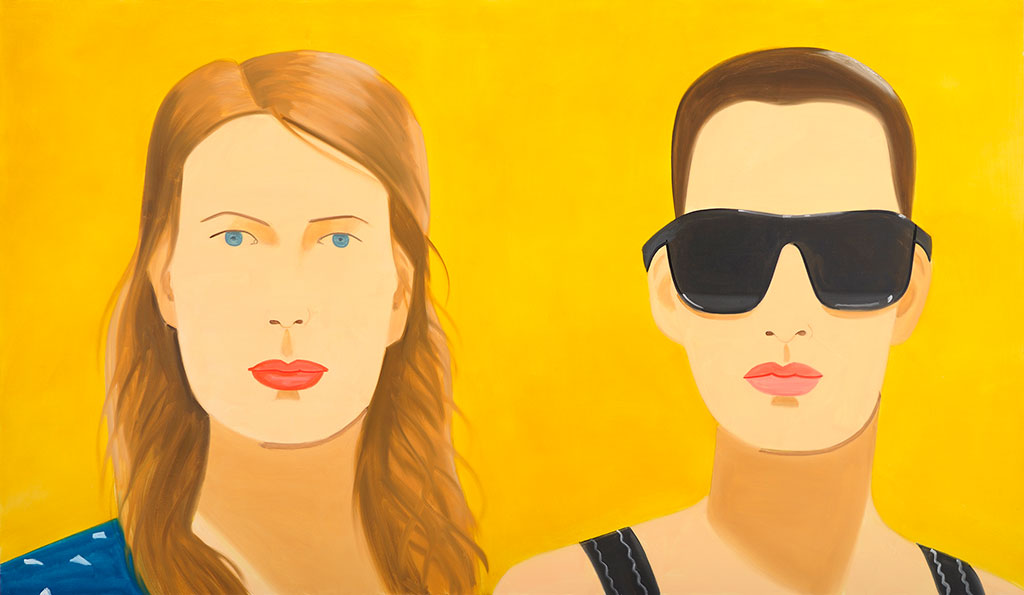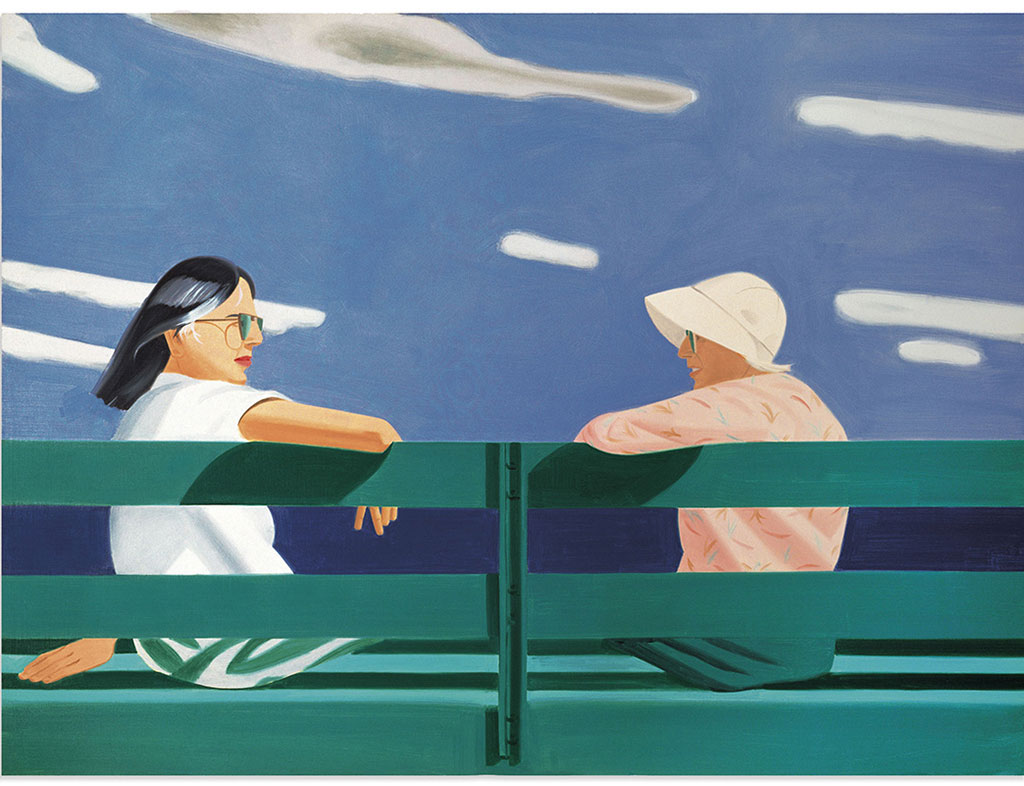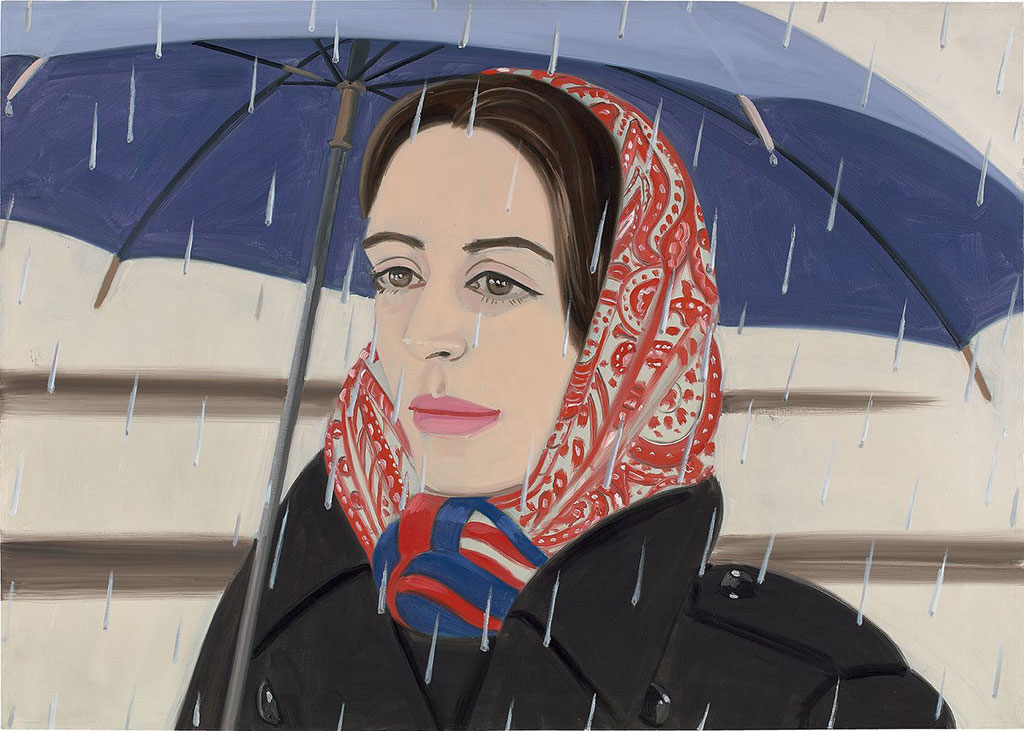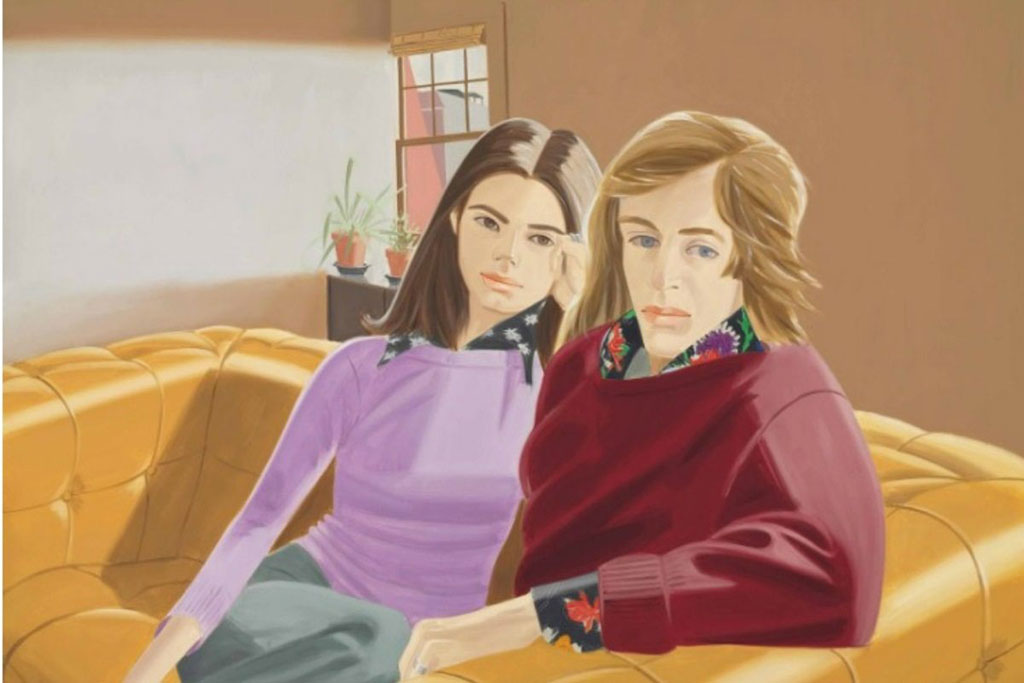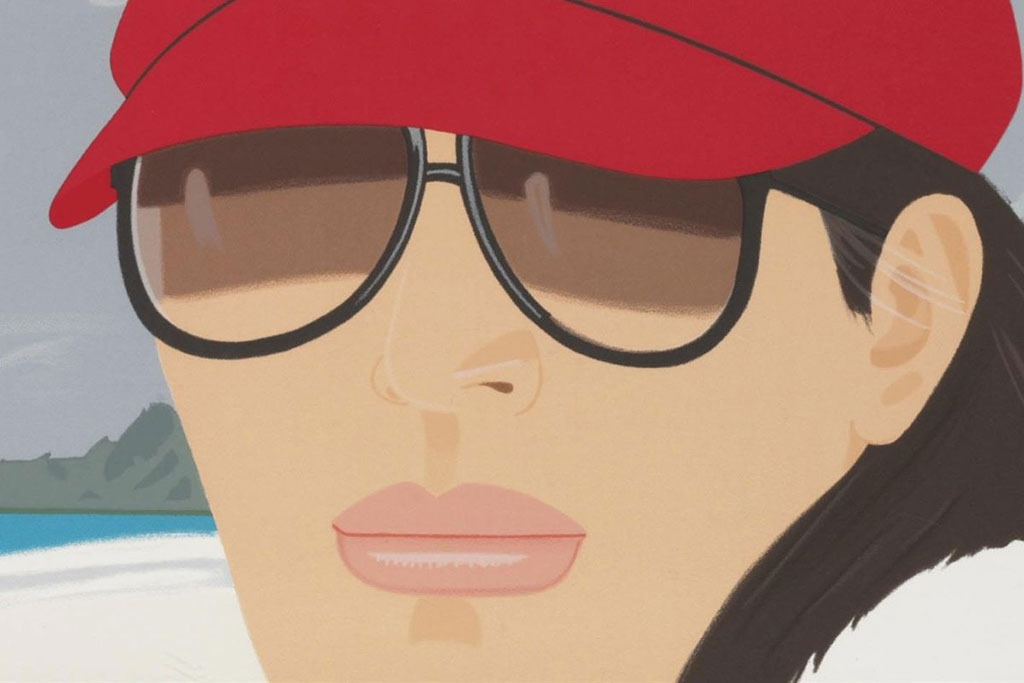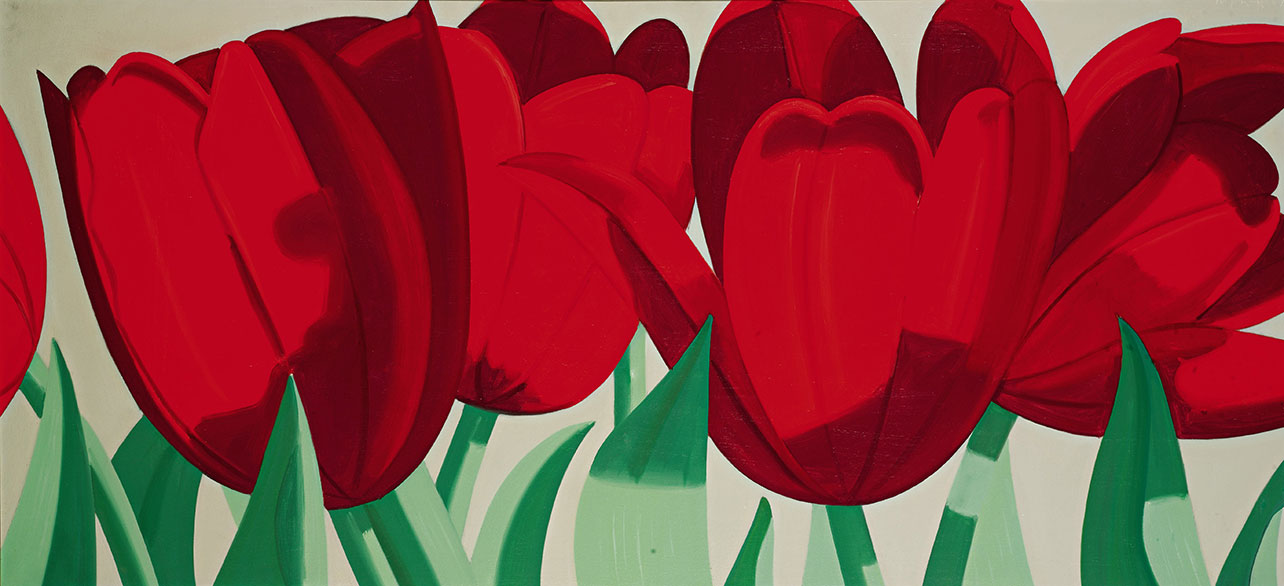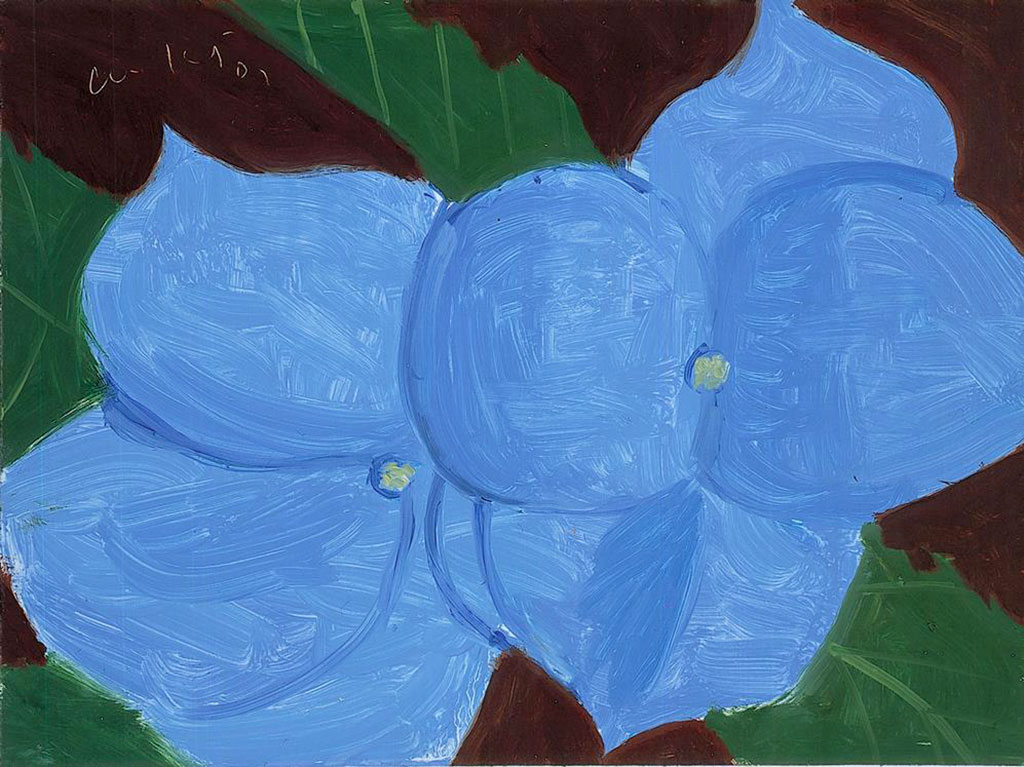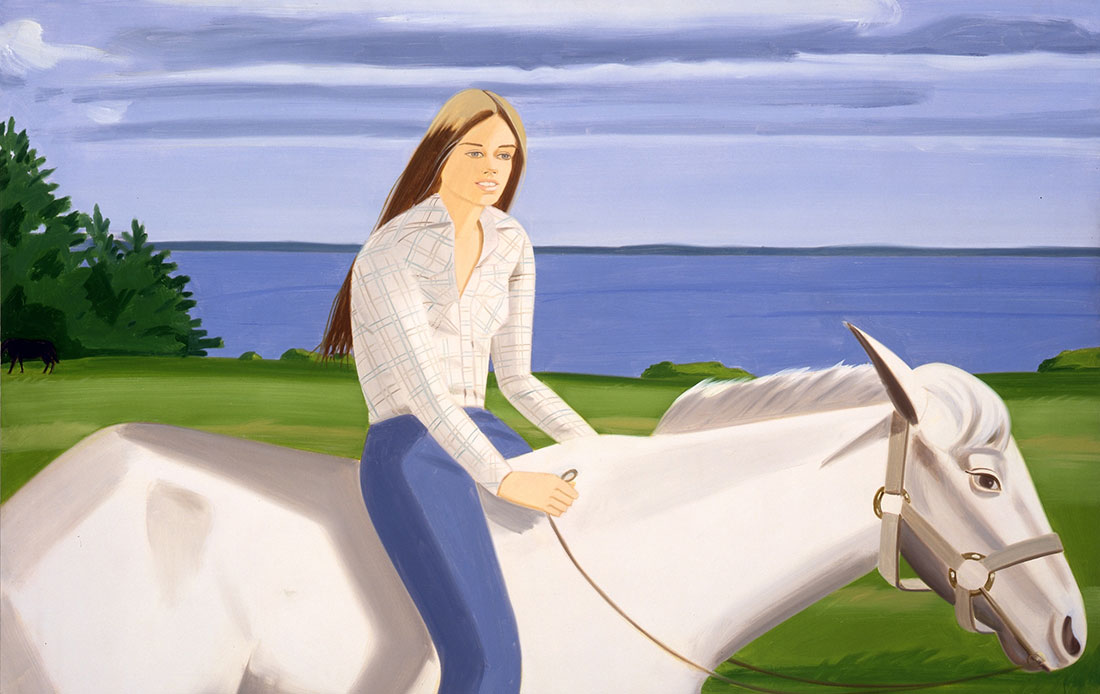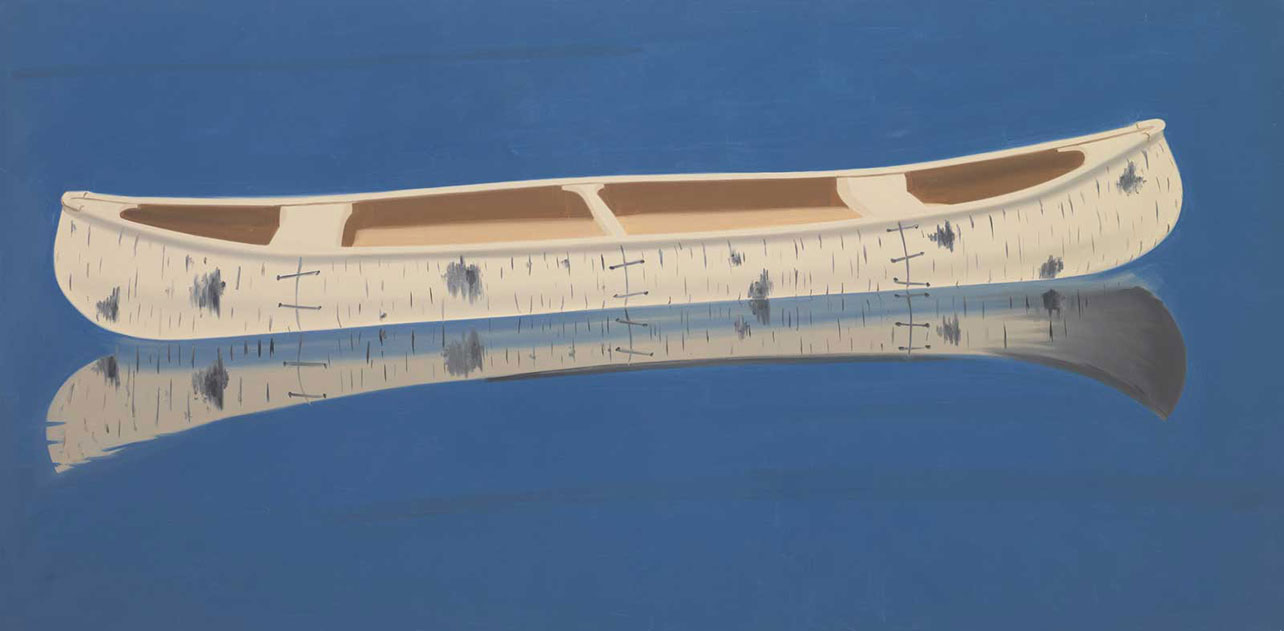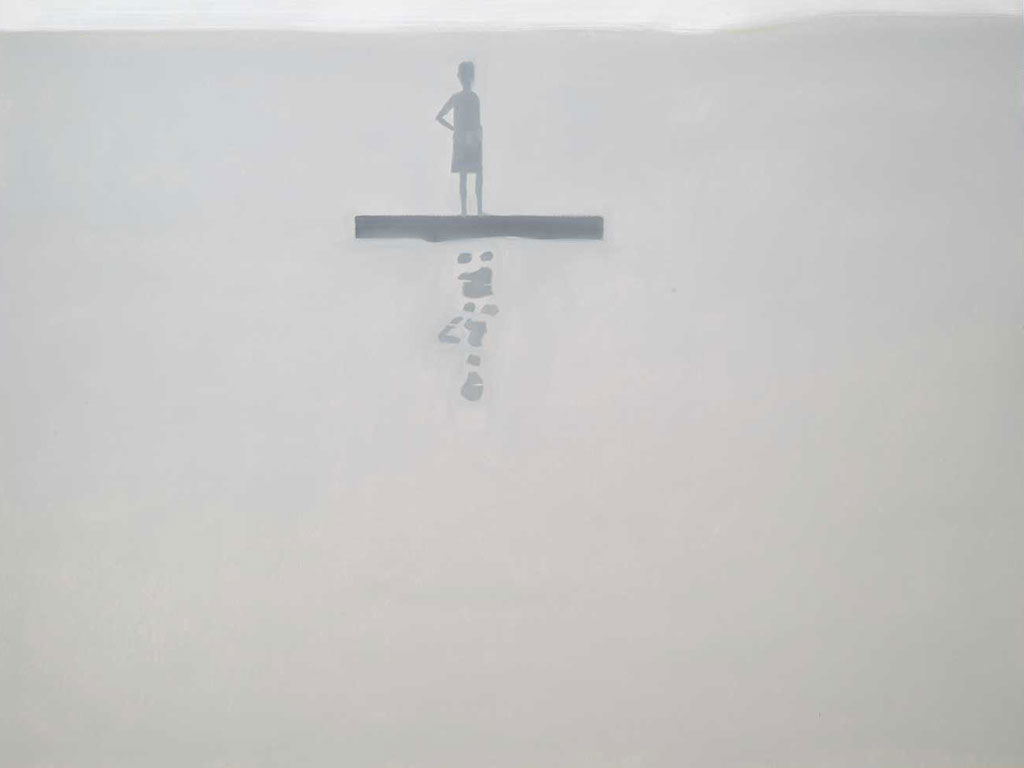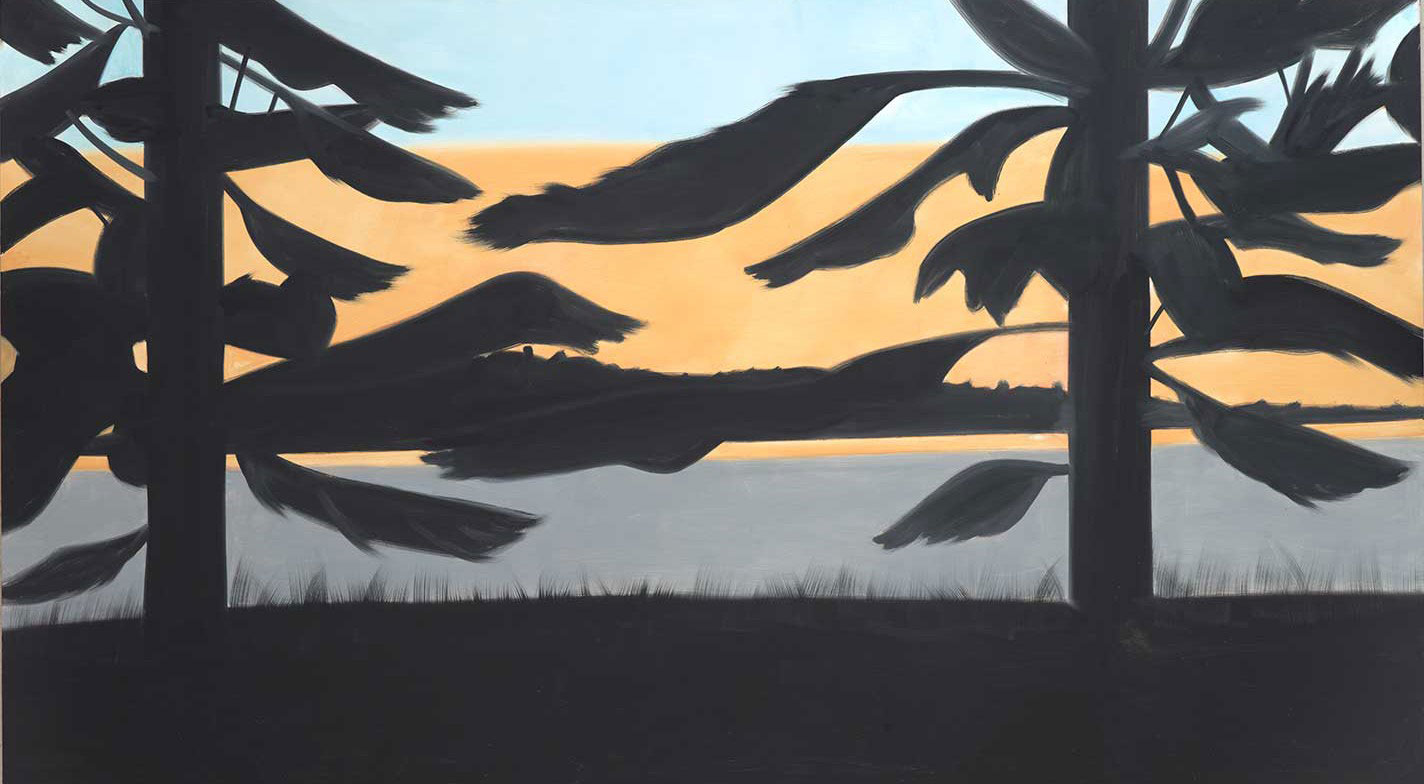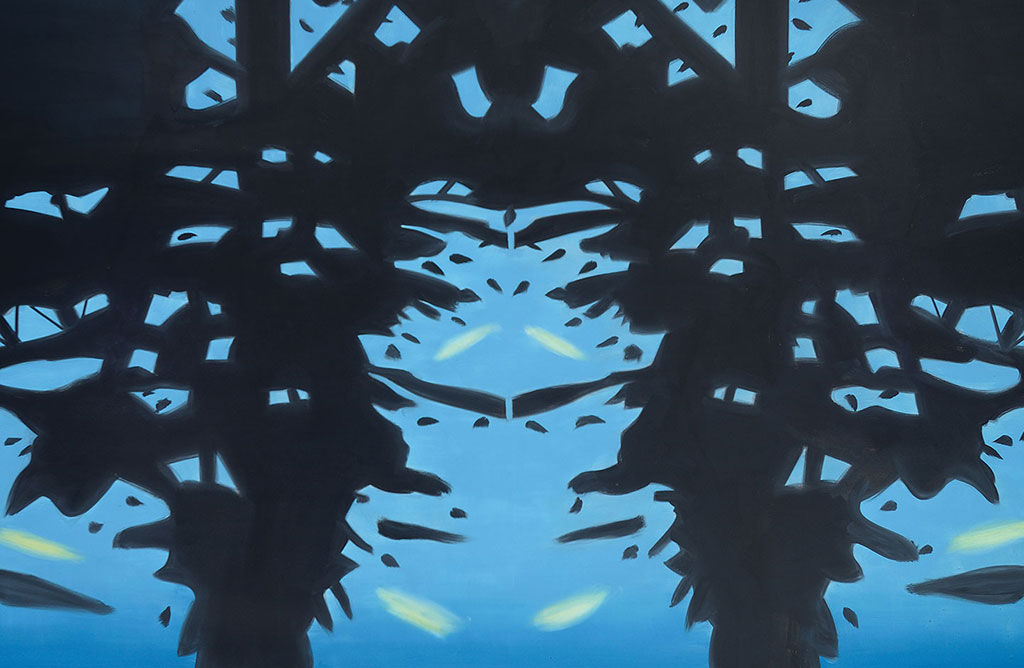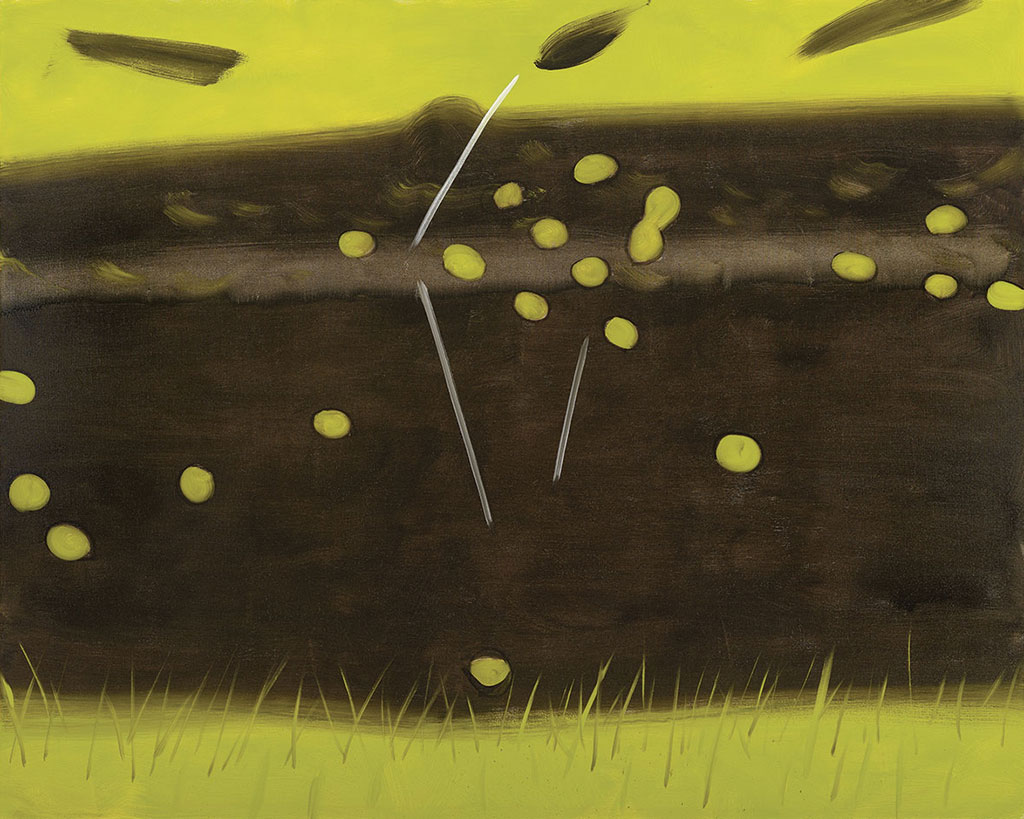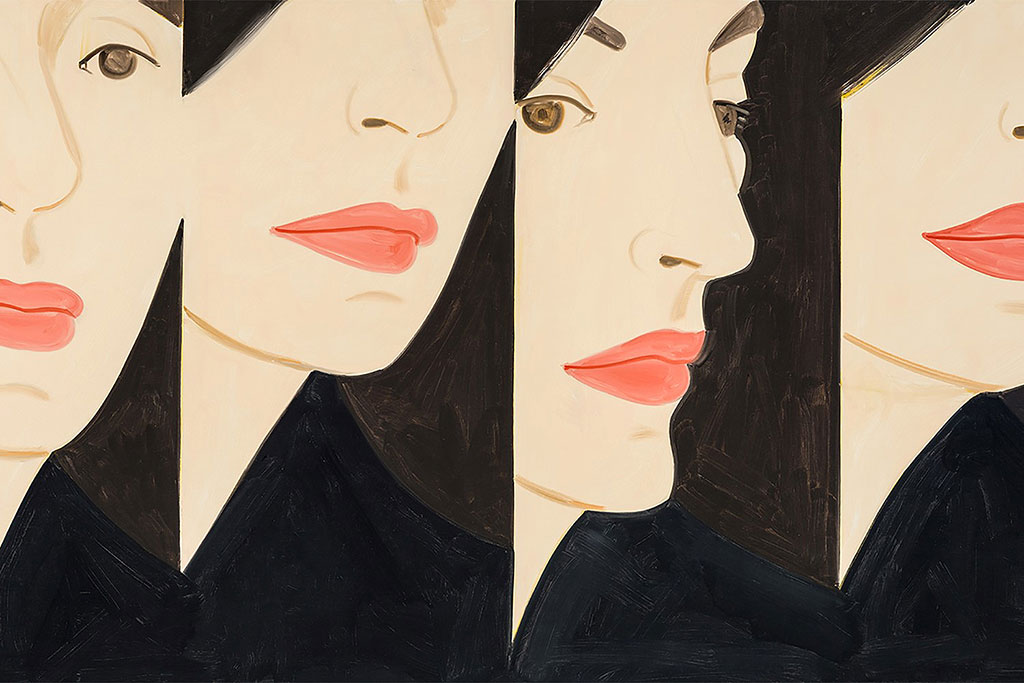TRACES: Alex Katz
 Today is the occasion to bear in mind Alex Katz (24/7/1927- ). Since the 1960s he has developed a highly innovative style unlike any of his contemporaries. His landscapes and figures excel in their simplicity of line, form and colour. His brushwork is light and confident, the compositions subtle and simple, the dimensions majestic. Katz creates powerful images. With his huge canvases, selective palette and two-dimensional surfaces he creates paintings that have both realistic and abstract elements and refuse to allow themselves to be pigeonholed. Through documents or interviews, starting with: moments and memories, we reveal out from the past-unknown sides of big personalities, who left their indelible traces in time and history…
Today is the occasion to bear in mind Alex Katz (24/7/1927- ). Since the 1960s he has developed a highly innovative style unlike any of his contemporaries. His landscapes and figures excel in their simplicity of line, form and colour. His brushwork is light and confident, the compositions subtle and simple, the dimensions majestic. Katz creates powerful images. With his huge canvases, selective palette and two-dimensional surfaces he creates paintings that have both realistic and abstract elements and refuse to allow themselves to be pigeonholed. Through documents or interviews, starting with: moments and memories, we reveal out from the past-unknown sides of big personalities, who left their indelible traces in time and history…
By Efi Michalarou
 Alex Katz was born in Brooklyn, New York in 1927. In 1928, at the outset of the Depression, his family moved to St. Albans, a diverse suburb of Queens that had sprung up between the two world wars. Katz was raised by his Russian émigré parents, both of whom were interested in poetry and the arts, his mother having been an actress in Yiddish Theater. Katz attended Woodrow Wilson High School for its unique program that allowed him to devote his mornings to academics and his afternoons to the arts. In 1946, Katz entered The Cooper Union Art School in Manhattan. At Cooper Union, Katz studied painting under Morris Kantor and was trained in Modern art theories and techniques. Upon graduating in 1949, Katz was awarded a scholarship for summer study at the Skowhegan School for Painting and Sculpture in Maine, a grant that he would renew the following summer. During his years at Cooper Union, Katz had been exposed primarily to modern art and was taught to paint from drawings. Skowhegan encouraged him to paint from life, which would prove pivotal in his development as a painter and remains a staple of his practices today. Katz explains that Skowhegan’s plein air painting gave him “a reason to devote my life to painting.” Katz’s first one-person show was held at the Roko Gallery in 1954. Katz had begun to develop a circle of acquaintances within the second generation New York School painters and their allies in the other arts. He counted among his friends the figurative painters Jane Freilicher, Fairfield Porter, and Larry Rivers, photographer Rudolph Burckhardt, and poets John Ashbery, Edwin Denby, Kenneth Koch, Frank O’Hara, and James Schuyler. From 1955 to 1959, usually following a day of painting, Katz made small collages of figures in landscapes from hand-colored strips of delicately cut paper. In the late 1950s, he made a decision to attempt greater realism in his paintings. He became increasingly interested in portraiture and painted his friends and in particular his wife and muse, Ada. Katz began using monochrome backgrounds, which would become a defining characteristic of his style, anticipating Pop Art and separating him from gestural figure painters and the New Perceptual Realism. In 1959, Katz made his first painted cutout. At first these were cut out from canvas and mounted on contoured wood; soon, he began painting them directly onto the cut wood. In the 1960s, he shifted to painting directly on shaped aluminum sheets, a practice which has continued throughout his career, forming a series of freestanding or wall-mounted portraits that exist in actual space. In the early 1960s, influenced by films, television, and billboard advertising, Katz began painting large-scale paintings, often with dramatically cropped faces. In 1965, he also embarked on a prolific career in printmaking. Katz would go on to produce many editions in lithography, etching, silkscreen, woodcut and linoleum cut. After 1964, Katz increasingly portrayed groups of figures. He would continue painting these complex groups into the 1970s, portraying the social world of painters, poets, critics, and other colleagues that surrounded him. He began designing sets and costumes for choreographer Paul Taylor in the early 1960s, and he has painted many images of dancers throughout the years. In the 1980s, Katz took on a new subject in his work: fashion models in designer clothing. In the late 1980s and 1990s, Katz focused much of his attention on large landscape paintings, which he characterizes as “environmental.” Rather than observing a scene from afar, the viewer feels enveloped by nearby nature. Katz began each of these canvases with “an idea of the landscape, a conception,” trying to find the image in nature afterwards. In his landscape paintings, Katz loosened the edges of the forms, executing the works with greater painterliness than before in these allover canvases. In 1986, Katz began painting a series of night pictures—a departure from the sunlit landscapes he had previously painted, forcing him to explore a new type of light. Variations on the theme of light falling through branches appear in Katz’s work throughout the 1990s and into the 21st century. At the beginning of the new millennium, Katz also began painting flowers in profusion, covering canvases in blossoms similar to those he had first explored in the late 1960s, when he painted large close-ups of flowers in solitude or in small clusters. Beginning in 2010, Katz literally re-framed his subject matter by employing more drastic cropping of the individual portraits. In the same vein he began composing paintings using multiple tightly cropped images of the same subject sequenced across the canvas similar to a filmstrip, but with the-non chronological variations in angle creating the impression of an environmental portrait. Katz continues to expand upon his present-tense landscapes finding more expansive and refined light. Recently he has begun to work from images taken with his iPhone, reversing the practice of working from life and flattening the image to make a 2D memory of a place and breathing depth into it through paint.
Alex Katz was born in Brooklyn, New York in 1927. In 1928, at the outset of the Depression, his family moved to St. Albans, a diverse suburb of Queens that had sprung up between the two world wars. Katz was raised by his Russian émigré parents, both of whom were interested in poetry and the arts, his mother having been an actress in Yiddish Theater. Katz attended Woodrow Wilson High School for its unique program that allowed him to devote his mornings to academics and his afternoons to the arts. In 1946, Katz entered The Cooper Union Art School in Manhattan. At Cooper Union, Katz studied painting under Morris Kantor and was trained in Modern art theories and techniques. Upon graduating in 1949, Katz was awarded a scholarship for summer study at the Skowhegan School for Painting and Sculpture in Maine, a grant that he would renew the following summer. During his years at Cooper Union, Katz had been exposed primarily to modern art and was taught to paint from drawings. Skowhegan encouraged him to paint from life, which would prove pivotal in his development as a painter and remains a staple of his practices today. Katz explains that Skowhegan’s plein air painting gave him “a reason to devote my life to painting.” Katz’s first one-person show was held at the Roko Gallery in 1954. Katz had begun to develop a circle of acquaintances within the second generation New York School painters and their allies in the other arts. He counted among his friends the figurative painters Jane Freilicher, Fairfield Porter, and Larry Rivers, photographer Rudolph Burckhardt, and poets John Ashbery, Edwin Denby, Kenneth Koch, Frank O’Hara, and James Schuyler. From 1955 to 1959, usually following a day of painting, Katz made small collages of figures in landscapes from hand-colored strips of delicately cut paper. In the late 1950s, he made a decision to attempt greater realism in his paintings. He became increasingly interested in portraiture and painted his friends and in particular his wife and muse, Ada. Katz began using monochrome backgrounds, which would become a defining characteristic of his style, anticipating Pop Art and separating him from gestural figure painters and the New Perceptual Realism. In 1959, Katz made his first painted cutout. At first these were cut out from canvas and mounted on contoured wood; soon, he began painting them directly onto the cut wood. In the 1960s, he shifted to painting directly on shaped aluminum sheets, a practice which has continued throughout his career, forming a series of freestanding or wall-mounted portraits that exist in actual space. In the early 1960s, influenced by films, television, and billboard advertising, Katz began painting large-scale paintings, often with dramatically cropped faces. In 1965, he also embarked on a prolific career in printmaking. Katz would go on to produce many editions in lithography, etching, silkscreen, woodcut and linoleum cut. After 1964, Katz increasingly portrayed groups of figures. He would continue painting these complex groups into the 1970s, portraying the social world of painters, poets, critics, and other colleagues that surrounded him. He began designing sets and costumes for choreographer Paul Taylor in the early 1960s, and he has painted many images of dancers throughout the years. In the 1980s, Katz took on a new subject in his work: fashion models in designer clothing. In the late 1980s and 1990s, Katz focused much of his attention on large landscape paintings, which he characterizes as “environmental.” Rather than observing a scene from afar, the viewer feels enveloped by nearby nature. Katz began each of these canvases with “an idea of the landscape, a conception,” trying to find the image in nature afterwards. In his landscape paintings, Katz loosened the edges of the forms, executing the works with greater painterliness than before in these allover canvases. In 1986, Katz began painting a series of night pictures—a departure from the sunlit landscapes he had previously painted, forcing him to explore a new type of light. Variations on the theme of light falling through branches appear in Katz’s work throughout the 1990s and into the 21st century. At the beginning of the new millennium, Katz also began painting flowers in profusion, covering canvases in blossoms similar to those he had first explored in the late 1960s, when he painted large close-ups of flowers in solitude or in small clusters. Beginning in 2010, Katz literally re-framed his subject matter by employing more drastic cropping of the individual portraits. In the same vein he began composing paintings using multiple tightly cropped images of the same subject sequenced across the canvas similar to a filmstrip, but with the-non chronological variations in angle creating the impression of an environmental portrait. Katz continues to expand upon his present-tense landscapes finding more expansive and refined light. Recently he has begun to work from images taken with his iPhone, reversing the practice of working from life and flattening the image to make a 2D memory of a place and breathing depth into it through paint.
